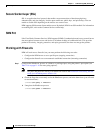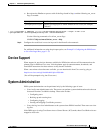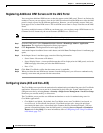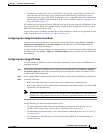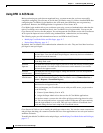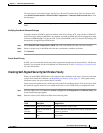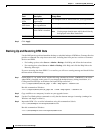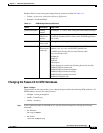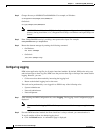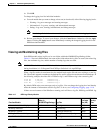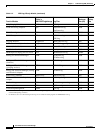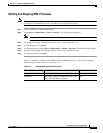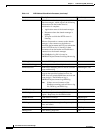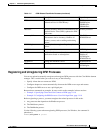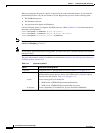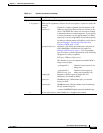
11-10
User Guide for Device Fault Manager
OL-11390-01
Chapter 11 Administering DFM (Advanced)
System Administration
Step 2 Change directory to NMSROOT/conf/dfmDb/bin. For example, on Windows:
cd Program Files\CSCOpx\conf\dfmDb\bin
On Solaris:
cd /opt/CSCOpx/conf/dfmDb/bin
Note NMSROOT is the folder where DFM is installed on the server. If you selected the default
directory during installation, it is C:\Program Files\CSCOpx on Windows and /opt/CSCOpx on
Solaris.
Step 3 Enter ChangeDfmDbPasswd.pl, providing a new password as input. For example:
ChangeDfmDbPasswd.pl
newpassword
Step 4 Restart the daemon manager by entering the following command:
• On Windows:
net start crmdmgmt
• On Solaris:
/etc/init.d/dmgtd stop
Configuring Logging
DFM writes application log files for all major functional modules. By default, DFM writes only error
and fatal messages to these log files; DFM saves the previous three logs as backups.You cannot disable
logging. However, you can:
• Collect more data when needed by increasing the logging level
• Return to the default logging level as the norm
This task can be performed by a user logged in to DFM in any of the following roles:
• System Administrator
• Network Administrator
• Network Operator
Step 1 After selecting the DFM Configuration tab, select Logging. The Logging: Level Configuration page is
displayed.
Note You cannot disable logging. DFM will always write error and fatal messages to application log
files.
Step 2 For each DFM functional module, the Error check box is always selected; you cannot deselect it.
To set all modules to Error, the default logging level:
a. Click the Default button. A confirmation page is displayed.



